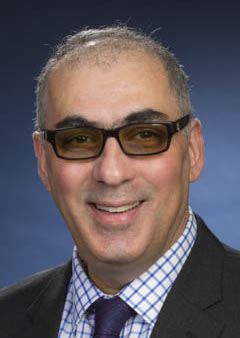Spring ’19 Joint CSC@USC/CommNetS-MHI Seminar Series
 |
Michael Demetriou,
Worcester Polytechnic Institute
|
Abstract
The goals in disaster management, characterized by hazardous plumes in indoor or outdoor environments, are the quickest detection of the disaster presence, its prompt reconstruction and the adaptive evacuation policy. In this talk, a very particular type of disaster is considered, namely the one resulting in hazardous plumes that are harmful to humans, and possibly to equipment. Such plumes are modeled by advection-diffusion partial differential equations with static or mobile sources that release harmful substances to the environment. The goal is to reconstruct the plume in real time, capturing all features of the plume. A model-based state estimator of the plume concentration is proposed and which combines estimation techniques with computational fluid dynamics and smart computing to arrive at real-time implementable plume concentration estimators. Some of the challenges in implementing a real-time state reconstruction scheme are presented. Solutions to these challenges are presented and include the use of mobile sensors to improve spatial resolution, spatial grid switching and refinement/coarsening for computational load reduction, and domain decomposition methods for code parallelization.
Biosketch
Michael Demetriou is a Professor of Aerospace Engineering at the Worcester Polytechnic Institute. He received his PhD degree from USC in Electrical Engineering-Systems in 1993. He served as an Associate Editor for the IEEE Transactions on Automatic Control, the ASME Journal of Dynamic Systems, Measurement, and Control, and the SIAM Journal on Control and Optimization. In 2003 he established the IEEE-CSS Technical Committee on Distributed Parameter Systems and he served as his first chair (2003-2012). He currently serves as the Secretary of the SIAM Control and Systems Theory activity group, as a member of the SIAM/SIAG Advisory Committee, and as a member of the SIAG/CST Conference Steering Committee. He is the IEEE/CSS-SIAM/SIAG Liaison and is serving as the SIAM Director in the the American Automatic Control Council (AACC) Board. His current research interests include optimization and control of mobile sensor and actuator networks in spatially distributed systems with applications to intrusion detection and containment.
